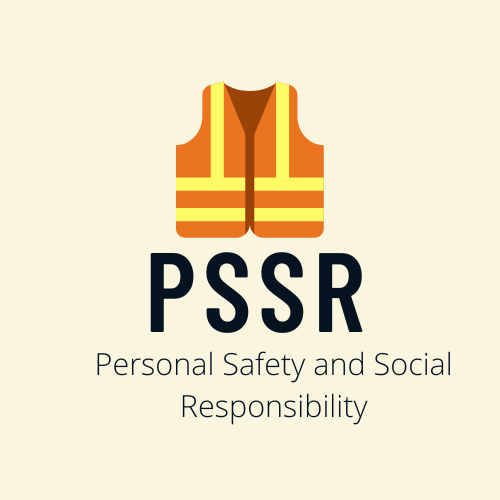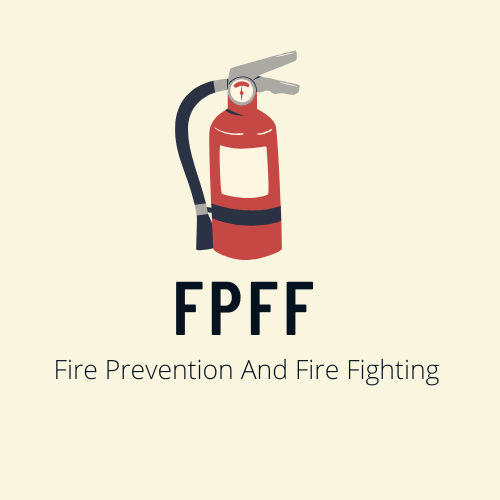This EFA exit exam questions and answer quiz contain 30 questions
If you found any questions answer incorrect please let us know by Clicking here.
151. A skeletal
injury to the lower back could result from direct trauma to the:
A) Cervical vertebrae.
B) Thoracic vertebrae.
C) Lumbar vertebrae. (correct)
D) Coccygeal vertebrae.
152. Which one of the following is a function of
the skin?
A) Regulation of oxygen levels.
B) Production of proteins.
C) Regulation of body temperature. (correct)
D) Removal of carbon dioxide.
153. Urine is expelled from the body through the:
A) Kidneys.
B) Bladder.
C) Ureters.
D) Urethra
.(correct)
154. Insulin is produced in the:
A) Spleen.
B) Liver.
C) Pancreas. (correct)
D) Gallbladder.
155. When communicating with patients:
A) Stay at eye level & maintain eye contact. (correct)
B) Stay as close to the patient as possible.
C) Use medical terminology to enhance credibility.
D) Hide facts if the situation is serious.
156. In cases of behavioral disorders, the
responder should:
A) Always use restraints.
B) Give the patient a choice in the treatment. (correct)
C) Play along with auditory or visual hallucinations.
D) Force the patient to make decisions.
157. The best way to
prevent a Critical Incident Stress situation from becoming worse is:
A) Ignore it.
B) Be familiar with the signs and
symptoms.(correct)
C) Ensure early use of proper medication.
D) Force the responder to talk about the situation.
158. Remove a contact lenses only if:
A) There is a chemical burn to the eye.(correct)
B) The eyeball is injured.
C) Transport time is short.
D) The casualty is wearing hard lenses.
159. You discover a particle embedded in the
casualty's cornea. You should:
A) Remove the particle with a moist corner of a facial tissue or clean cloth.
B) Flush the eye with water for 10 minutes.
C) Use a splinter forceps to remove the particle.
D) Cover the eye and transport the casualty to
medical help. (correct)
160. Signs and
symptoms of intense light burns to the eyes include:
A) Bleeding from the conjunctiva.
B) Gritty feeling in the eyes. (correct)
C) Lacerations to the globe.
D) Bleeding from the conjunctiva.
161. Eye injuries that include lacerations:
A) Should be covered with clean, moist dressings.
B) I indicate possible skull fracture.
C) Usually involve a great deal of bleeding. (correct)
D) Require moderate pressure on the eye to
control bleeding.
162. Irrigate eyes with:
A) Diluted vinegar.
B) Saline solution. (correct)
C) An appropriate chemical antidote.
D) Sodium bicarbonate.
163. Signs and symptoms of acute abdomen include:
A) Excessive hunger or thirst.
B) Hypertension and brachycardia.
C) Distension with rebound tenderness.(correct)
D) Fever with deep, shallow breathing.
164. Signs that a hernia is serious include:
A) Pain and tenderness at site.(correct)
B) Pale, ashensk in color at site.
C) Hernia can be pushed back into body.
D) Hernia is above the diaphragm
165. Which one of the
following is not crucial in cases of abdominal distress:
A) Establish the cause of the pain (correct)
B) Monitor the patient for signs of hypovolemic shock.
C) Be prepared to deal with vomiting
D) Give oxygen by non-rebreather mask
166. In the case of
abdominal evisceration, the emergency responder should:
A) Irrigate the wound before dressing it.
B) Give oxygen by nasal cannula.
C) Dress the wound with a moist, sterile
dressing (correct)
D) Gently reposition the organs in the abdominal cavity.
167. "Referred pain":
A) Occurs when the sensation of pain is delayed.
B) Results when the two nervous systems come into contact.
C) Is the symptomatic description of pain by the patient.
D) Is the description of pain as recorded on the patient care report.
168. Trauma to male and female genitalia:
A) Often involves significant bleeding (correct)
B) is not usually painful because of protected nerve endings.
C) Usually results in sterility
D) Often results in post-traumatic infection.
169. The priorities of MCIs include all but one of
the following.
A) Overestimating the resources that may be required.
B) Comprehensive care of all patients. (correct)
C) Planning for the positioning of all vehicles.
D) Arranging for advanced level care providers at the scene.
170. at the scene of
a MCI:
A) All patients are assessed quickly and
triaged. (correct)
B) Only conscious patients are assessed.
C) Patients without a detectable pulse are given the highest priority.
D) All patients are transported immediately.
171. the most
knowledgeable responder in the first ambulance is generally assigned to role
of:
A) Incident manager.(correct)
B) Triage officer.
C) Staging officer.
D) Communications officer.
172. Of the following
casualties, which would you care for first? The casualty who is:
A) In shock without apparent injuries, but conscious.
B) Unconscious and lying on his back. (correct)
C) Bleeding from the forehead, but conscious.
D) Unconscious and lying on his stomach.
173. Typically in a
triage system:
A) Those whose survival requires immediate care are classified level 3.
B) Those with minor injuries but suffering extreme pain are classified level 1.
C) Those in cardiac arrest or not breathing are classified level 2.
D) Those who will survive if care is somewhat
delayed are classified level 2.(correct)
174. The factor which
indicates a drug related emergency is life-threatening is:
A) Altered mental status.
B) Dilated pupils slow to respond to light.
C) Lack of coordination and slurred speech.
D) High, low or irregular pulse.(correct)
175. Constant
monitoring of the patient in a drug- related emergency is important because:
A) The patient will likely try to take more of the drug.
B) These patients are more likely to sue.
C) The patient's
condition may change quickly. (correct)
D) The patient is more likely to become violent.
176. An essential
element of a responder's verbal report includes:
A) The name of the patient.
B) The patient's telephone number.
C) The time of the incident.
D) The patient's response to the care
given(correct)
177. Which one of the
following is the best way to assess dehydration in the elderly?
A) Check the mucous membranes in the eyes and
mouth.(correct)
B) Check skin condition.
C) Take an oral temperature.
D) Assess the pulse rate.
178. The most
accurate source of time for reporting purposes is:
A) The responder's watch.
B) The dispatch unit. (correct)
C) The local radio station.
D) The patient's watch.
179. A ninety-five
year old lady has fallen down a flight of stairs. You suspect spinal injury and
decide to put the patient on a spine board. You should be aware that:
A) It may be difficult to fit a cervical collar.
B) Spinal curvature may make it difficult and
uncomfortable to put the patient on the board.(correct)
C) AK.E.D. is better for this patient.
D) Because of her age, she may be more prone to vomiting.
180. Which of the
following is NOT a special consideration when assessing elderly patients?
A) Geriatric patients often have a reduced gag reflex.
B) Radial pulse may be weakened by peripheral vascular disease.
C) Patients may not show signs of fever even in cases of serious infection.
D) Mental status often reflects a fear of
emergency responders.(correct)
181. To help control
bleeding after the baby is born:
A) Pack the vagina with pads.
B) Massage the mother's uterus.(correct)
C) Elevate the mother's legs above heart level.
D) Place the mother on her right side.
182. Crowning occurs:
A) In the first stage of labour.
B) In the second stage of labour.(correct)
C) In the third stage of labour.
D) In the fourth stage of pregnancy.
183. When suctioning
a new born you should use:
A) a bulb syringe.(correct)
B) A V-Vac suction device.
C) A straw.
D) A battery powered suction device.
184. One of the most
difficult things to assess in infants and young children is:
A) Blood pressure.
B) Pain.(correct)
C) Adequate perfusion.
D) Level of consciousness.
185. The onset of shock in infants and children:
A) Maybe sudden and severe.(correct)
B) Is no different than adults.
C) Usually progresses slowly.
D) Usually results from cardiac problems.
186. Assessments of children should take into
consideration:
A) No splints should be used in call are designed for adult patients.
B) Abdominal injuries are less serious since muscles are less developed.
C) The skull has not completely fused, so head injuries are uncommon.
D) Chest injury is likely to involve organs
without damage to ribs.(correct)
187. The responder who suspects a child to be the
victim of abuse should:
A) Question parents immediately.
B) Focus on management of injuries to the
child.(correct)
C) Gather evidence and question bystanders.
D) Immediately remove the child from parents or caregivers.
188. A child with history of a sore throat, fever
and painful swallowing, has breathing difficulties. You should:
A) Arrange for immediate transport to a medical
facility.(correct)
B) Start mouth-to-mouth artificial respiration.
C) Stand by and encourage coughing.
D) Begin abdominal thrusts.
189. The mammalian
reflex refers to:
A) An increase in heart rate and respiration.
B) A decrease in heart rate and dilation of blood vessels.
C) An increase in heart rate and constriction of pupils.
D) A decrease in heart rate and constriction of
blood vessels.(correct)
190. Three common
scuba related emergencies are:
A) Air embolism, decompression sickness and mammalian reflex.
B) Air embolism,
decompression sickness and baro trauma.(correct)
C) Decompression sickness, the bends and baro trauma.
D) Air embolism, baro trauma and the squeeze.





